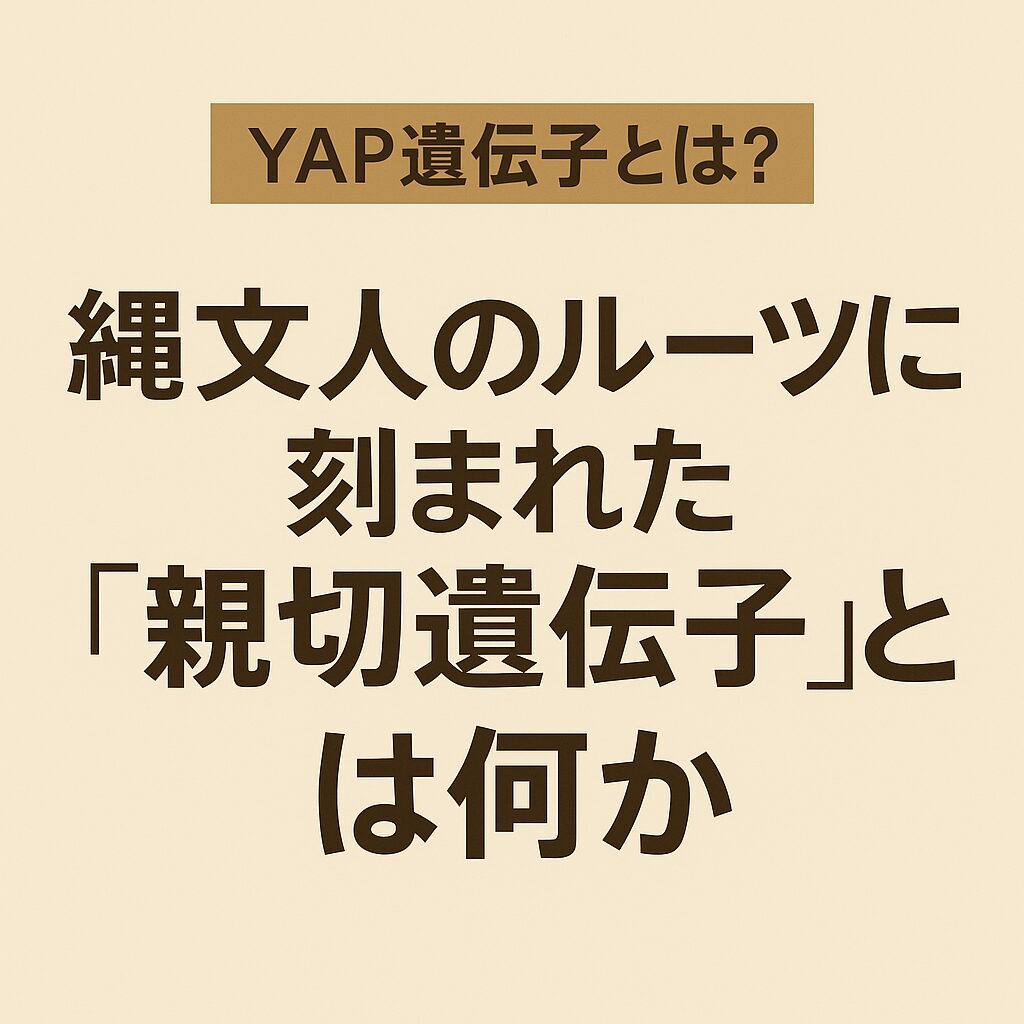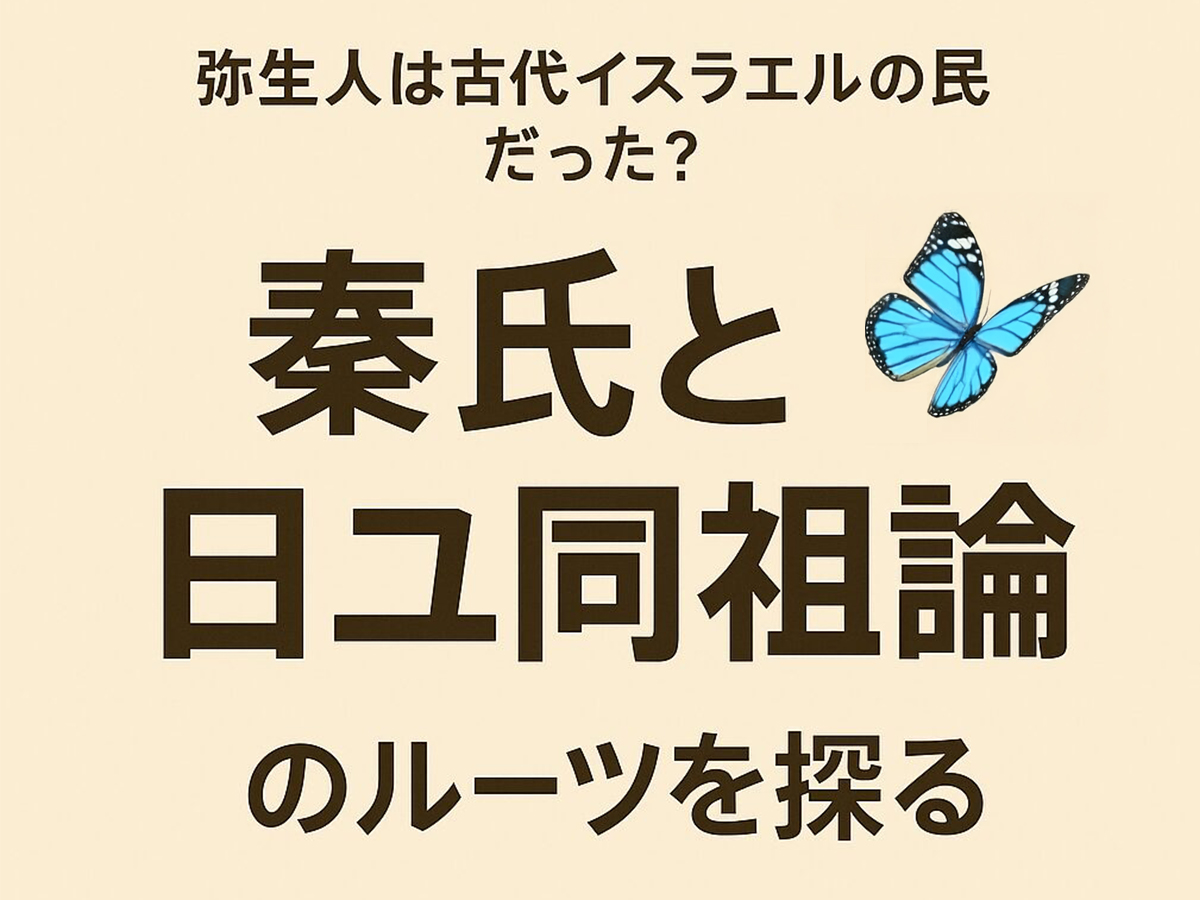Hello everyone. Today, let’s delve into a rather deep topic. I’ll introduce you to the “roots of the Japanese people” and the “YAP gene” that is deeply connected to them.
- Are the Roots of the Japanese People in the Jomon Period?
- What is YAP?
- Didn’t It Remain on the Continent? The Mystery of the YAP Gene
- YAP = Kindness Gene!?
- Jomon Lifestyle and Spirituality
- From the Jomon Period to Mixed-Race People
- Artist Taro Okamoto’s View of Jomon Charm
- The Japanese Heart Etched in the YAP Gene
- [Characteristics of Jomon People] Are Earlobes Proof of Jomon Ancestry?
- Did Yayoi People Not Have Earlobes?
- Yayoi Characteristics Are Also Important Roots Supporting Japan
- Lastly
Are the Roots of the Japanese People in the Jomon Period?
Tracing our Japanese DNA, we can actually go back to the Jomon period. Among the genetic markers that have garnered attention is the YAP gene found on the Y chromosome. It’s said that roughly 40% of Japanese men carry this YAP gene, with a particularly high prevalence among Ainu men (88%) and in regions like Okinawa and Hokkaido.
What is YAP?
“YAP” stands for “Y Alu Polymorphic,” meaning “polymorphic Y chromosome.” This gene is passed down from father to son and is not found in women. This YAP gene is actually quite rare globally, hardly seen in China or Korea. On the other hand, it exists only in certain regions, such as Tibet, Bhutan, and the Middle East.
Didn’t It Remain on the Continent? The Mystery of the YAP Gene
Why is the YAP gene so prevalent in the Japanese archipelago but almost absent on the continent? There are several theories:
- People carrying the YAP gene were caught in conflicts on the continent and didn’t survive.
- They originally disliked conflict and migrated to Japan in search of peace.
This suggests that the people who came to Japan might have been those who “wanted to avoid conflict and live peacefully.”
YAP = Kindness Gene!?
What’s fascinating is the “nature” attributed to this YAP gene. It is, in short, a tendency to be kind and devoted to others. Furthermore, they would help others even at their own expense. Doesn’t this sound a lot like the Japanese national character?
- Providing aid to countries in need.
- Being calm and orderly during disasters.
- Caring for others even when facing difficulties themselves.
Such behaviors might be a disposition etched in our DNA, not just a result of culture or education.
Jomon Lifestyle and Spirituality
The Jomon period was a unique era of Japanese culture that lasted for about 10,000 years or more. Characteristics of this period include:
- No social stratification.
- Almost no conflict.
- Living in harmony, respecting nature and helping each other.
They felt sacred power in clay figures, stone rods, wood, forests, water, and rocks, and cherished nature worship. They had rich sensibilities and a spirit of coexistence. At the center of this were the Jomon people, who possessed the YAP gene.
From the Jomon Period to Mixed-Race People
Eventually, in the Yayoi period, immigrants from Korea and China arrived. From that point, Japan began its journey as a mixed-race nation. (Note: There’s actually a reason why it can’t be called purely mixed-race, but I’ll write about that in the next article.)
As settlement and agriculture began, conflicts over land and water arose, and traces of battles with arrowheads (stone arrowheads) remain. While civilization developed, values different from the peaceful spirit of the Jomon period also entered.
Artist Taro Okamoto’s View of Jomon Charm
The artist Taro Okamoto said this about Jomon pottery: “This is art!” Indeed, the designs of Jomon pottery are surprisingly original, complex, and full of vitality. Taro Okamoto described their charm as “dialogue with the fourth dimension,” elevating Jomon forms to the realm of art.
The Japanese Heart Etched in the YAP Gene
The “kindness,” “earnestness,” and “diligence” that we modern Japanese possess. These might have their roots not only in culture and education but also in the Jomon spirit = the YAP gene.
Certainly, even today’s Japanese often find themselves in situations where others wonder, “How can they be so kind?” This might be the true essence of the Japanese people, inherited for over 10,000 years.
[Characteristics of Jomon People] Are Earlobes Proof of Jomon Ancestry?
The “Jomon people” are one of the roots of the Japanese. Among their physical characteristics, one that is surprisingly little known is whether they have earlobes (earlobes).
Characteristics of Jomon people include the following physical tendencies:
- Large, well-formed earlobes.
- Wet earwax (wet type).
- Sturdy, well-built physique.
- Dense body hair.
- Deep-set eyes and double eyelids.
Among these, “having earlobes” is considered one of the characteristics of Jomon-derived genes.
Did Yayoi People Not Have Earlobes?
On the other hand, the characteristics of Yayoi people (immigrant ancestors from Korea and China) are as follows:
- Small or almost no earlobes (lobless).
- Dry earwax (dry type).
- Slender build, straight hair, shallow facial features.
Thus, the shape of the earlobe and the nature of earwax can be clues to distinguish between Jomon and Yayoi lineage. Therefore, differences such as “having/not having earlobes” and “wet/dry earwax” are seen as individual variations.
Yayoi Characteristics Are Also Important Roots Supporting Japan
Japanese people are a mixed-heritage nation, inheriting characteristics from both Jomon and Yayoi people. Neither is good or bad; both are important ancestors who have shaped the nation of Japan.
Yayoi people had characteristics such as:
- Slender build and refined facial features.
- Smooth skin and straight hair.
- Brought efficient agricultural technology to Japan.
- Developed communal living and social systems.
They were important figures who supported the development of Japanese civilization and technology. Having small earlobes or dry earwax means that a person has inherited more Yayoi-type characteristics. This is by no means a negative thing; it is also said to indicate a tendency toward civilized wisdom and a preference for stability.
Lastly
Even as times change, the essence of people does not change so easily. Knowing our roots might be the first step towards deeply understanding ourselves. We may still carry the gentle DNA, passed down from the Jomon people, within our hearts.



コメント